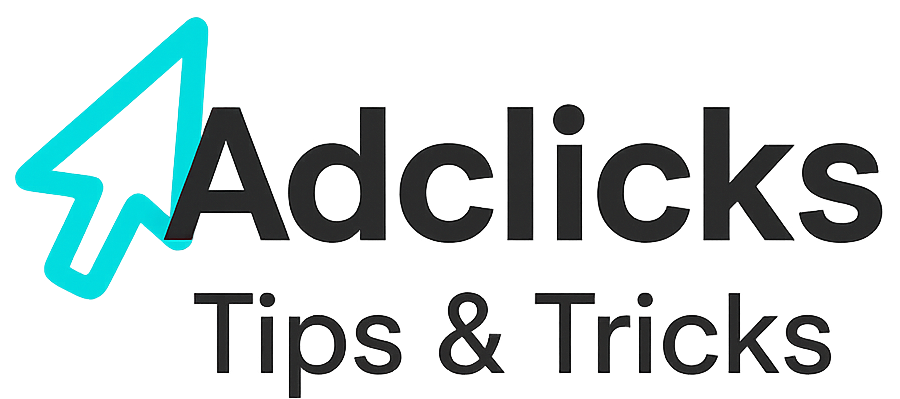Brainly as a traffic source
What it is and why it matters.
Brainly is a homework help network used by students, parents, and teachers in many countries. It blends community answers, expert checks, and AI tutoring into one flow. This mix creates steady demand for plain-language explainers and step-by-step guides that live off-site. Publishers with clear pages and fast loads can meet that demand and win repeat visits during the school year and exam peaks.
You can treat Brainly as a place where questions start and deeper reading happens on your website. Short, accurate answers on-platform can point to full walk-throughs, glossaries, or practice pages you host. That path turns student intent into sessions and time on page. When those pages are light and relevant, they convert without friction. This is also where Adclicks can support revenue in a measured way inside the template, without blocking the lesson flow.
Scale is large enough to matter. Brainly reported hundreds of millions of registered learners during its growth years and still sees strong usage across web and apps. The current product positions itself as an “AI Learning Companion,” and recent press notes the shift toward test prep and tutoring flows that hold attention. Those flows are a good match for evergreen explainers and reference pages you already own. Adclicks can sit in these pages as contextual units tied to the subject or grade level.
Who uses Brainly: roles, ages, and interests
The core audience is young and study-driven. On brainly.com, Similarweb shows the largest age slice is 18–24, with a near even gender split, and strong interest overlap with Education, Universities, Video Games, and Computing. That mix suggests high comfort with search, quick scans, and practical answers. Your on-site content should honor that with one clear takeaway per page and a clean path to more.
Local domains mirror this pattern with country nuance. In India, brainly.in skews 18–24 and male-leaning; in Indonesia, brainly.co.id skews 18–24 with a slight female majority; in the Philippines, brainly.ph shows a stronger female share. These details help you tune examples, subject picks, and calendar timing. Adclicks can follow the same country split, using language and category targeting to keep relevance high.
Behavior is intent-first. A large share of sessions begin with Google, then move to Brainly, then back to search or to specific tools like GauthMath. That bounce-and-return pattern favours tight answers that link to deeper reading when a student is ready. It also rewards mobile speed. When you budget for this channel, plan pages that lift RPM without heavy elements, and align CPC/CPM expectations to weekday spikes and exam months rather than a steady daily average.
Traffic and geography: global reach with strong local hubs
Web traffic to the .com domain is material and U.S.-heavy. Similarweb’s August 2025 view estimates 6.5 million visits to brainly.com, with the United States sending about three-quarters of desktop traffic. Average session time is near three minutes, with under three pages per visit. These are practical numbers for referral planning and landing-page design.
Local domains are large in their own right. Similarweb shows brainly.in at about 11.9 million monthly visits, led by India, and brainly.co.id among top Education sites in Indonesia. In Brazil, brainly.com.br reaches millions monthly with deep engagement times near five minutes in recent comparisons. Route links to the right local domain when the content fits the syllabus or language.
Semrush’s August snapshot places brainly.com near 10.9 million visits with the U.S., Brazil, India, Indonesia, and the Philippines as key contributors, and shows that over half of desktop sessions arrive from Google. This confirms that Brainly’s audience is comfortable moving between sites in a single task. Set your internal links to meet that habit with short sections, anchor links, and clear next steps. Use Adclicks only where it does not slow the first contentful paint.
Culture and mechanics: how to participate without breaking trust
Brainly is strict about academic integrity. The Honor Code bans cheating and plagiarism, and moderators act on reports. Answers should explain, cite, and teach—never dump a full test solution. Keep examples simple, show steps, and link to deeper reading only when it truly helps the learner. That tone builds trust and wins clicks over time.
The feature set blends AI, community, and live help. The site and apps present AI answers when the knowledge base is thin, “Dive Deeper” to add context, and a live expert option for paid users. Your off-site pages can mirror that flow: a crisp summary on top, worked steps in the middle, and optional extensions at the end. Adclicks can live in sidebar or in-content slots that align to the subject tag and device.
Video and app usage affect timing and templates. App store listings and coverage show an active mobile base and steady category ranks in Education. That reality favours short paragraphs, fast images, and no heavy scripts. When you test placements, keep an eye on scroll depth and exit rate, and plan CPC/CPM targets by device, since mobile study sessions often run shorter but happen more times per day.
Publisher fit: what sites profit from a Brainly encounter
Study aids and explainers convert well. Step-by-step math and science pages, grammar primers, citation guides, and quick civics explainers meet clear needs. These formats map to the most common Brainly intents and can lead to deeper resources like formula sheets or practice sets. When these pages are light and precise, students share them back into threads and save them for later.
Test prep, language learning, and STEM walkthroughs also fit. The product push toward AI-assisted plans and tutoring aligns with full-page guides that show patterns, not just answers. Use two-minute reads for core ideas, then link to longer drills or printable sets. Keep the conversion path simple, and let Adclicks supply context-aware demand when you do not have a house offer to promote.
Local curriculum hubs can win durable traffic. India, Indonesia, Brazil, and the Philippines each show strong demand through their local domains. Build targeted hubs for CBSE, K-12 science, Bahasa Indonesia grammar, ENEM tips, or Filipino literature terms, then seed compact answers on Brainly that point to those hubs. Match tone and examples to the locale. When modelling revenue, keep CPC/CPM bands realistic for student-heavy traffic and watch weekday curves.
Practical participation: answer format, linking, and timing
Keep answers short, accurate, and kind. Use one claim per sentence. Show the first step, then the trick, then the check. Close with a line that invites deeper learning and names the concept students can search on your site. This earns trust and leads to more profile visits and link clicks.
Link with care. Point only to pages that add real value, and never gate the basic explanation behind a wall. Label the link with the outcome (“Full steps,” “Printable formula sheet,” “Practice set”). Track the inbound with UTM tags so your analytics can see session quality by country, subject, and school level. Adclicks can be part of that page layout as a steady, low-distraction support.
Post with the school day in mind. Traffic tends to rise around homework hours and pre-exam windows in each market, and many sessions begin on mobile. Schedule your Brainly activity for late afternoon and early evening local time, then refresh before big test dates. Judge success by engaged sessions, return visits, saves, and sign-ups. Align CPC/CPM goals to those patterns so you do not over-promise during off weeks.
Measurement and benchmarks: what to watch and how to adapt
Start with reach and flow. On the .com domain, expect U.S.-led traffic with a mix of direct and Google-led sessions, and average duration near three minutes. On brainly.in, plan for large India volumes; on brainly.co.id, plan for Indonesia-first demand; on brainly.ph, expect a female-leaning mix. Use this map to set targets for each hub on your site.
Drill down to page-level fit. If a Brainly answer mentions a theorem, the landing page should open with that theorem in one sentence, then show the worked pattern. Use tables or callouts only when they help reading on a phone. Track per-page scroll depth, time to first answer, and link-out back to Brainly, since many students bounce between tabs while they study. Adclicks can stay in the template and keep RPM steady when lesson length varies.
Compare by geography and subject over a school term. Use Semrush and Similarweb snapshots to watch trend lines, traffic shares, and journeys to and from tools like GauthMath. Map gains to your own dashboards and note which subjects and locales raise session quality. Then feed wins back into your Brainly answer style and calendar. Keep CPC/CPM guardrails per market so your finance plan matches study cycles.
Risks and policy notes: how to stay inside the lines
Honor Code rules are enforced, and appeals exist. Do not post full test banks, paid materials, or copyrighted scans. Always explain in your own words and credit ideas. When in doubt, answer less on-platform and link to a clear, original page that teaches the core idea in your voice. This keeps your account safe and your brand trusted.
AI features are growing, but human tone still wins. Brainly’s AI-powered answers help when content is thin, and live experts handle deeper help for subscribers. Publishers who bring a friendly, step-wise voice stand out beside AI-generated text. Keep your pages fast, keep images small, and keep the lesson first. Adclicks can remain present without pulling focus from the learning task.
App trends matter for pacing. Education apps see low day-30 retention as a sector, so expect bursts near exams and quieter weeks in between. Plan content sprints ahead of those peaks. Use short refreshes to keep pages fresh in search. Tie spending and revenue models to the school calendar so CPC/CPM expectations match reality.
Putting it together: a 60–90 day play
In the first month, identify five core topics per locale and build answer-first pages that load fast on mobile. Seed compact Brainly answers that solve one obstacle and link to those pages. Watch which subjects draw saves and return visits, then add two more pages per winning subject. Keep notes on which phrases students use so your titles match their searches.
In the second month, expand into test-specific pages tied to local exams and grade levels. Use simple visuals for steps and add a short recap at the end. Review analytics by country and subject, and move links to the lines that get scanned most. Keep the layout light, and let Adclicks supply context-matched demand around those lines so the reading flow stays intact.
By month three, refine cadence and templates for the next term. Compare domain splits (US, IN, ID, PH, BR) and adjust language, examples, and posting times. Retire pages that no longer match the syllabus and upgrade those that do. Set goals for engaged sessions and sign-ups per subject hub and adjust budgets and CPC/CPM bands by device and locale.
Bottom line
Brainly’s users come with questions and leave when they get a clear, useful answer. That makes it a strong fit for publishers who can teach in steps and route readers to simple, focused pages. The traffic is global yet local in flavour, with heavy usage in the U.S., India, Indonesia, Brazil, and the Philippines. If you stay inside the Honour Code, answer plainly, and respect mobile habits, you can turn those moments into steady site outcomes.
Keep the experience fast and modest. Place links that promise one result and deliver it. Measure by engaged sessions, return visits, saves, and sign-ups, not just pageviews. Use your templates to keep learning first and let Adclicks support the page without stealing attention from the lesson.
Plan for seasonality and device split. Expect homework-hour spikes, pre-exam waves, and mobile-first sessions. Set realistic revenue guardrails and roll them up by subject and country. Keep CPC/CPM targets tied to these cycles, and keep the copy friendly and clear so students feel helped, not sold to.




